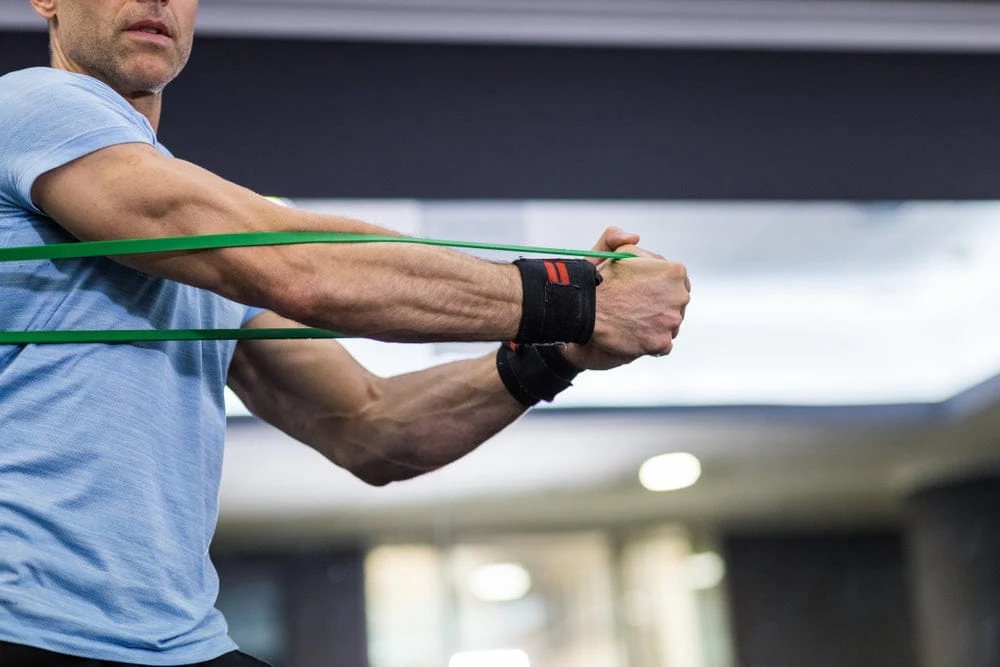How to Do the Dead Bug: Master Core Control and Spine-Safe Strength
If you want to build a strong, stable core that supports your lifts — and protects your spine — the Dead Bug is one of the smartest places to start.
Don’t be fooled by its simplicity. This move is a foundational core exercise that teaches you to brace, breathe, and move with control — all while keeping your lower back in a safe, neutral position.
In this article, we’ll break down:
- What the Dead Bug trains (and why it works)
- Proper technique step-by-step
- Common mistakes
- Variations and progressions
- Programming tips for bodybuilders and lifters
What Is the Dead Bug?
The Dead Bug is a core stability drill that reinforces anti-extension — your ability to resist excessive arching of the lower back.
It’s called the “Dead Bug” because of the position: lying on your back with arms and legs raised, then slowly extending opposite limbs while keeping your core braced.
Muscles Worked
Primary:
- Transverse abdominis (deep core stabilizer)
- Rectus abdominis (six-pack muscle)
- Obliques (control rotation)
Secondary:
- Hip flexors
- Shoulders and scapular stabilizers
This movement reinforces the core’s job as a stabilizer — not a mover. That’s the key to safer squats, deadlifts, presses, and even running mechanics.
How to Do the Dead Bug (Step-by-Step)
Set-Up:
- Lie flat on your back on a mat.
- Raise your arms straight above your shoulders.
- Lift your legs, knees bent at 90 degrees (tabletop position).
- Flatten your lower back to the floor (posterior pelvic tilt).
Execution:
- Brace your core (as if preparing to be punched).
- Slowly extend your right arm and left leg until just above the ground.
- Pause, then return to the starting position.
- Repeat with the opposite side.
Reps:
- 6–12 reps per side (controlled)
- 2–4 sets
Tempo:
- Lower slowly (2–3 seconds)
- Brief pause at full extension

Common Mistakes (And Fixes)
❌ Arching the Lower Back
Fix: Keep your low back pressed into the floor. Reduce range of motion if needed.
❌ Going Too Fast
Fix: Slow it down. Focus on core tension and smooth movement.
❌ Arms or Legs Bending
Fix: Keep limbs straight during extension for maximum challenge and control.
❌ Letting Knees Drift In
Fix: Keep hips and knees aligned; don’t let them collapse inward.
🔁 Progressions and Variations
🔹 1. Wall Dead Bug (Beginner)
- Push your hands into a wall to engage lats and core
- Only move legs
🔹 2. Dead Bug with Resistance Band
- Hold band taut between hands or loop around feet
- Adds anti-extension and shoulder stability challenge
🔹 3. Weighted Dead Bug
- Hold light dumbbells or kettlebells in hands
- Increase load as core control improves
🔹 4. Stability Ball Dead Bug
- Squeeze a ball between hands and knees
- Encourages total-body tension
🔹 5. Straight-Leg Dead Bug (Advanced)
- Keep legs straight throughout movement
- Increases lever length and difficulty
How to Program the Dead Bug
For Beginners or Rehab:
- 3 sets of 8–10 reps per side
- Focus on control and bracing
For Warm-Ups / Activation:
- 1–2 sets before lifting sessions
- Use it to cue breathing and core tension
For Strength / Hypertrophy Support:
- Superset with lower back or glute work
- Add light resistance for overload
Why Every Lifter Should Use Dead Bugs
- Trains deep core muscles without spinal compression
- Teaches proper bracing mechanics for compound lifts
- Reinforces neutral spine — key for safe heavy training
- Useful in warm-ups, finishers, or as a standalone core move
This isn’t a “starter-only” movement — top powerlifters, gymnasts, and physique athletes all use the Dead Bug to stay strong, symmetrical, and pain-free.
Final Word: Build Core Control from the Ground Up
The Dead Bug might look simple, but it’s one of the most effective tools to build a functionally strong, braced core. It lays the groundwork for every heavy lift you do — and it does it without the wear and tear of endless sit-ups or spinal flexion.
Train it consistently. Stay strict with your form. And progress slowly over time.
A strong core isn’t built in a day — but it starts with the Dead Bug.
🔗 Related Articles:
- The Complete Guide to Core Training for Muscle, Strength, and Stability
- Top Core Training Mistakes (And How to Fix Them)
- Pallof Press: Build Core Strength Through Anti-Rotation
- Hanging Leg Raise Mastery
- Core Workouts for Bulking vs Cutting



